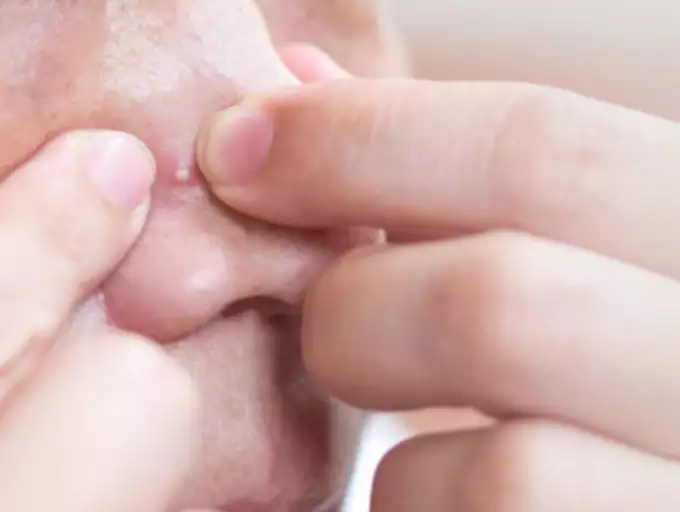
The Shocking Truth About Concealing Skin Cancer: A Woman’s Story Skin cancer is a menace that affects millions of people worldwide, and yet it remains an elusive topic that many choose to ignore. But what happens when you’re diagnosed with skin cancer and you decide to keep it under wraps? One woman chose this path, concealing her diagnosis from those closest to her out of fear and shame. In this blog post, we delve into the shocking truth about concealing skin cancer through a powerful personal story that highlights the importance of early detection, treatment, and above all else – speaking up. So grab your sunscreen and get ready for an eye-opening read!
Introduction to Skin Cancer
Linda was 54 when she was diagnosed with melanoma, the deadliest form of skin cancer. “I was in complete shock,” she says. “I had no idea that I was at risk.” Linda is not alone. Skin cancer is the most common cancer in the United States, and melanoma rates have been increasing for 30 years. Yet, many people remain unaware of the dangers of ultraviolet (UV) radiation from the sun and indoor tanning devices.
Linda’s story is a warning to us all. She thought she was being careful by wearing sunscreen and avoiding direct sunlight. But it wasn’t enough. “I had no idea that I needed to be so vigilant,” she says. “I thought I was doing everything right.”
Now, Linda is determined to spread the word about skin cancer prevention. She wants everyone to know the shocking truth: even if you take precautions, you may still develop this deadly disease.
The best way to prevent skin cancer is to avoid exposure to UV radiation. This means staying out of the sun, especially during peak hours (10am-4pm), and using sunscreen with an SPF of 30 or higher when you are outdoors. You should also avoid indoor tanning devices, which emit harmful UV radiation.
If you notice any changes in your skin, see a dermatologist immediately. Skin cancer can be cured if it’s caught early enough. But if it’s not treated, it can spread to other parts of
The Woman’s Story
In June 2015, I was diagnosed with Stage 4 melanoma. The cancer had spread to my lymph nodes and liver. I was told that I had a 50/50 chance of surviving for five years.
I began treatment immediately, which included immunotherapy and targeted therapy. I also had surgery to remove the cancer from my lymph nodes and liver.
Since my diagnosis, I have been incredibly proactive about my health. I get regular checkups and skin cancer screenings. I also make sure to wear sunscreen every day and avoid sun exposure as much as possible.
I am happy to say that, as of September 2019, I am still cancer-free! My story is a testament to the importance of early detection and treatment of skin cancer. If you are concerned about skin cancer, please don’t hesitate to get checked out by a doctor.
Common Cause of Skin Cancer
There are many different types of cancer, but the most common are basal cell carcinoma and squamous cell carcinoma. These types of cancer are usually caused by exposure to ultraviolet (UV) radiation from the sun or tanning beds.
Other less common causes of skin cancer include exposure to certain chemicals, such as arsenic, and viruses, such as human papillomavirus (HPV). Cancer can also be caused by genetic factors. People with fair skin, light hair, and blue eyes are at a higher risk of developing skin cancer.
Signs and Symptoms of Skin Cancer
It’s estimated that one in five Americans will develop skin cancer in their lifetime. cancer is the most common form of cancer, and it’s on the rise. The good news is that it’s also one of the most preventable and treatable forms of cancer.
There are three main types of skin cancer: basal cell carcinoma, squamous cell carcinoma, and melanoma. Each type has different signs and symptoms.
Basal cell carcinoma: This type of skin cancer usually appears as a small, flesh-colored bump or a brownish patch on the skin. It can also look like a sore that doesn’t heal. Basal cell carcinomas often occur on sun-exposed areas of the body, such as the face, neck, chest, and back.
Squamous cell carcinoma: This type of skin cancer usually appears as a firm, red bump or a scaly patch on the skin. It can also look like a sore that doesn’t heal. Squamous cell carcinomas often occur on sun-exposed areas of the body, such as the face, ears, neck, and hands.
Melanoma: This is the most serious type of skin cancer. Melanomas can appear as a new mole or an existing mole that changes in size, shape, or color. Melanomas often have irregular borders and may be black or multi-colored. They can occur anywhere on the body, but they are more.
Prevention and Diagnosis It is important to be proactive about preventing and diagnosing skin cancer. Here are some tips:
1. Avoid excessive sun exposure. Seek shade when outdoors, and wear sunscreen with an SPF of 30 or higher.
2. Examine your skin regularly for new or unusual growths, changes in existing moles, or any other suspicious lesions. If you notice anything unusual, make an appointment with a dermatologist right away.
3. Get annual skin cancer screenings from a dermatologist. This is especially important if you have risk factors for skin cancer, such as fair skin, a history of sunburns, or a family history of the disease.
Treatments for Skin Cancer
There are a number of treatments for cancer, depending on the type and severity of the cancer. For non-melanoma skin cancers, the most common treatment is surgery to remove the cancerous tissue. This can be done through a number of methods, including Mohs surgery, which is a technique that removes layers of skin one at a time and examines them under a microscope to ensure all cancerous cells have been removed. Other surgical methods include cryosurgery, in which the cancerous tissue is frozen with liquid nitrogen; curettage and electrodesiccation, in which the cancerous tissue is scraped away with a sharp instrument and then destroyed with an electric current; and laser surgery, which uses high-intensity light to destroy cancer cells.
For melanoma, the most common treatment is also surgery, but it may be more extensive than for non-melanoma skin cancers. In some cases, lymph nodes may also be removed (called lymphadenectomy) to check for spread of the cancer. Other treatments for melanoma include radiation therapy, immunotherapy, and targeted therapy. Radiation therapy uses high-energy beams to destroy cancer cells; immunotherapy helps the immune system kill cancer cells; targeted therapy targets specific genes or proteins that are involved in tumor growth.
Conclusion
This woman’s story is a stark reminder of how serious and life-threatening cancer can be. We should all take the time to learn more about this condition, practice protective measures such as wearing sunscreen, and consult with medical professionals if we have any concerns. It’s important to stay vigilant in protecting ourselves from dangers like sun exposure that could potentially cause skin cancer. With knowledge comes power—let us use it for our health and safety.
3. Male contraceptive pills: Are they safe to use for men?
4. Watermelons may improve diet quality and cardio metabolic health
